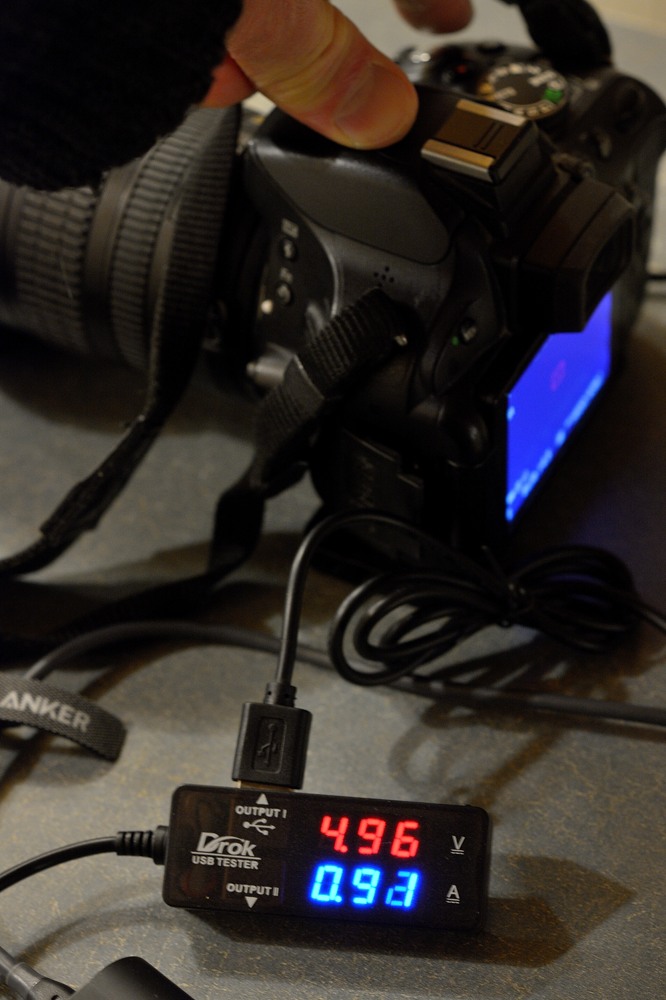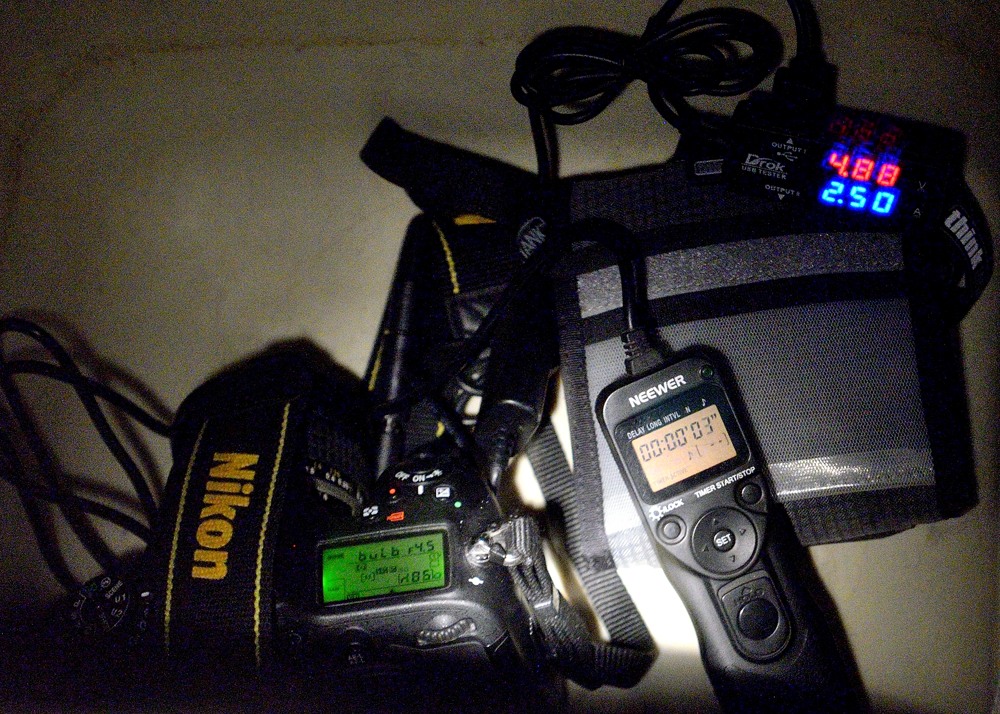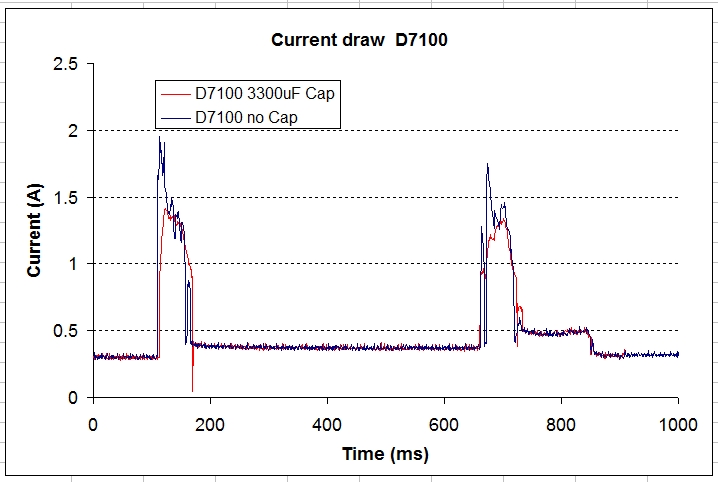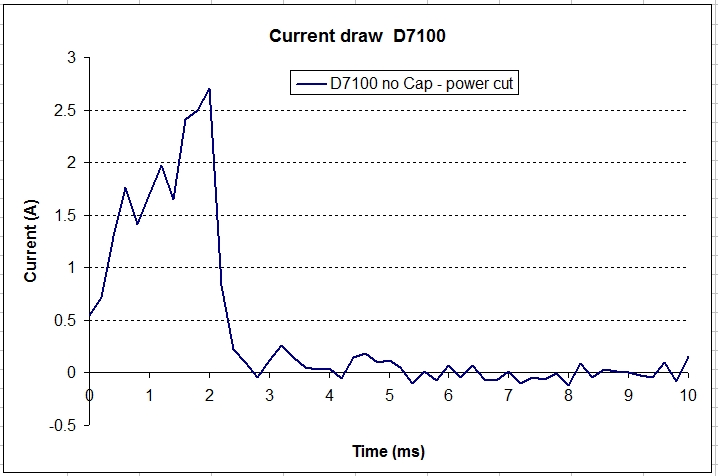A little update on the progress here. Below is a list of the item I bought. They were intended to be able to power one body from the battery bank and as a plan B two bodies (D7100 and D5100) from AC power. In addition comes the 4 Panasonic 3.4 Ah 18650 cells that an ebay supplier was able to ship. They tested OK with respect to capacity so are likely not counterfeits :

The Tomo battery bank (13.6 Ah) that also can act as an 18650 battery charger was able to power each of D7100 and D5100 even in live view. The bank has a 2A output limit, but one can go somewhat above that before the short circuit protection kicks in and it shuts down. The current display fluctuates a bit and showed a little higher values than a dedicated USB power meter. The current draw is not unsurprisingly higher on the D7100 than the D5100. For asto images I would not use live view except during aiming and focusing. Keep in mind that the actual current will be something near half of this after conversion to 9V with better than 95% efficiency.


The first test test with the D5100 indicated no problems with powering it with 5 min exposures for >20 hours. But wait - when I downloaded the card there were 45 folders with image files on the card. What was going on? This is a characteristic of the D5100. If power is interrupted (for instance battery swap without turning power off first), it will forget all changes to the settings, including the number of the last image captured. So when power goes on again the image number will be a duplicate of an existing one, so a new folder is created. So not so good.
Further outside testing with the D7100 although not subject to the same problems with not saving settings changes, revealed similar problems, with shutter getting hung up now and then and not completing the cycle. Only on next release will the shutter recover and then funtion normally on the release after that. Here is a capture that revealed the problem: During shutter actuation or termination, the power peaks, here at 2.5 A well above the 2A rating. In this particular case, there was not a power cut, but obviously it is near the limit:

(Captured though a window, it was -13°C outside).
Last night I set up to directly measure the current draw of the two bodies by passing the 9V power supply though a 0.1 Ohm resistor and recording voltage drop with my DIY oscilloscope. The red line is the same with a 3300uF capacitor across the power leads to smooth the peaks. Exposure time 0.5 seconds. First peaks is when mirror goes up, second when mirror goes down.
D7100:

Idle current is about 0.3A, the mirror up peaks near 2A, then while shutter is open about 0.37A, new 2A peak when mirror is returned, and then fluctuating around 0.48A while image is written to SD card. Most important the high current draw during the mirror movement lasts 45-50 ms each. The capacitor helped to dampen the peaks but was not enough to keep current below the 1A output spec. of the DC-DC converter.
D5100:

A similar pattern with 2A peaks during mirror movements. However the high current periods last longer, about 95 ms and each consists of two peaks, which is even more problematic. The idle current draw is lower though, about 0.14A and when shutter is open about 0.37A.
Here is a detail of what happens when the power draw gets too high and there is consequently a power cut to the D7100:

The night of the Geminid meteor shower it magically cleared up after snowing before midnight. After my first experiences I had already decided to go for plan B, powering both cameras with AC power from a long extension cord which was available at the location. The two cameras were going though the night and collected 60GB of image data. However the D5100 which was released with the internal timer tended to stop recording after less than 250 frames and had to be restarted in spite of the max number of frames set to 999. This did not appear to be a power problem though as there was no accumulation of image folders.
For powering the cameras from the battery bank I am looking into adding a 1 F 9V super capacitor across the power leads. I will just have to figure out how to dampen the inrush current on first power up. So it looks like I will get use for my soldering skills after all.